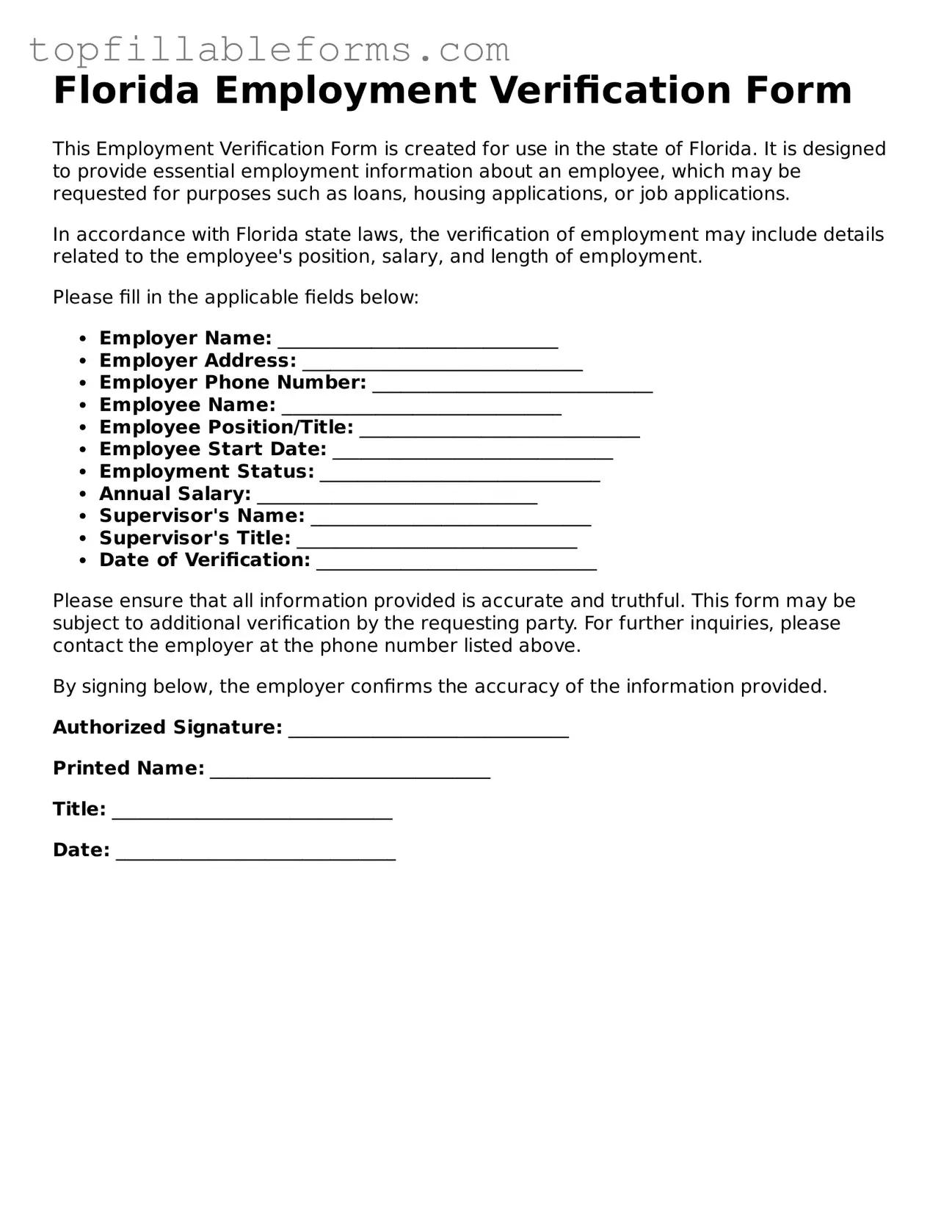Florida Employment Verification Form
This Employment Verification Form is created for use in the state of Florida. It is designed to provide essential employment information about an employee, which may be requested for purposes such as loans, housing applications, or job applications.
In accordance with Florida state laws, the verification of employment may include details related to the employee's position, salary, and length of employment.
Please fill in the applicable fields below:
- Employer Name: ______________________________
- Employer Address: ______________________________
- Employer Phone Number: ______________________________
- Employee Name: ______________________________
- Employee Position/Title: ______________________________
- Employee Start Date: ______________________________
- Employment Status: ______________________________
- Annual Salary: ______________________________
- Supervisor's Name: ______________________________
- Supervisor's Title: ______________________________
- Date of Verification: ______________________________
Please ensure that all information provided is accurate and truthful. This form may be subject to additional verification by the requesting party. For further inquiries, please contact the employer at the phone number listed above.
By signing below, the employer confirms the accuracy of the information provided.
Authorized Signature: ______________________________
Printed Name: ______________________________
Title: ______________________________
Date: ______________________________
